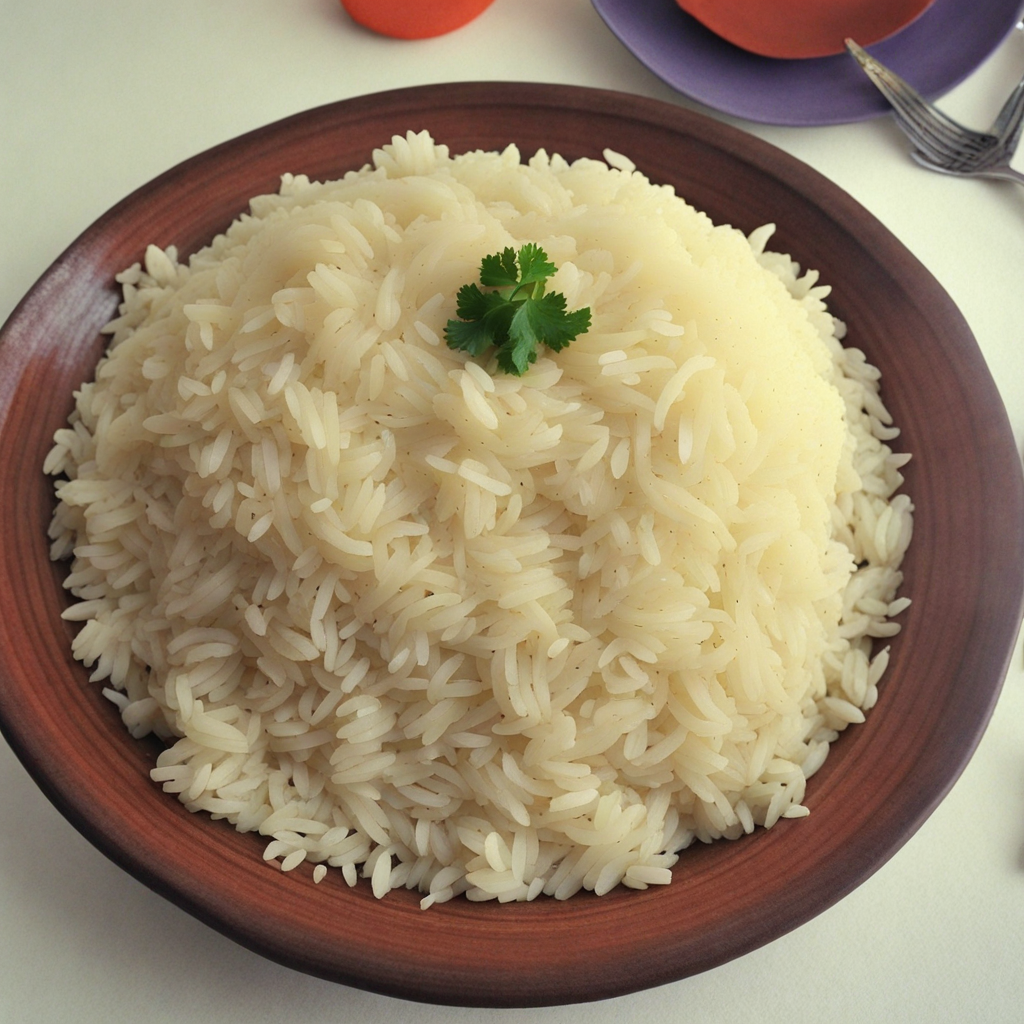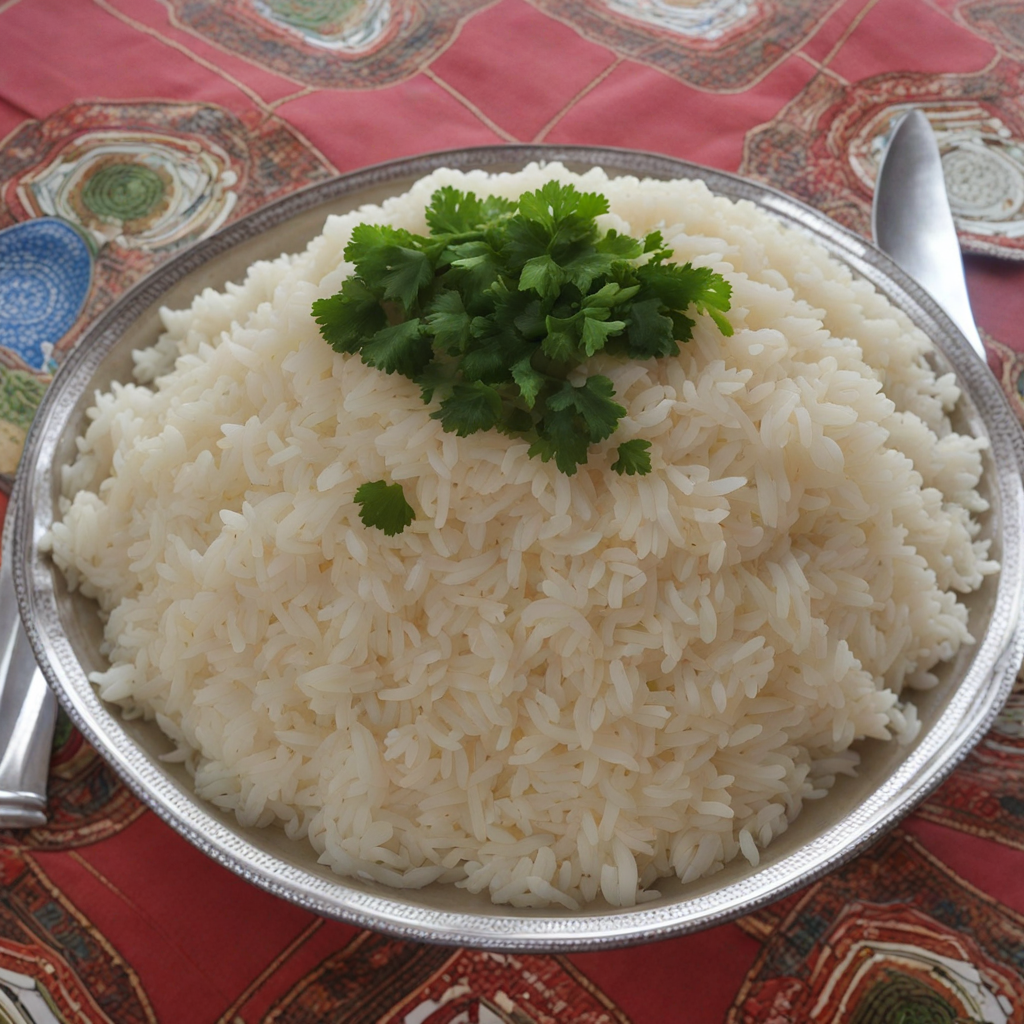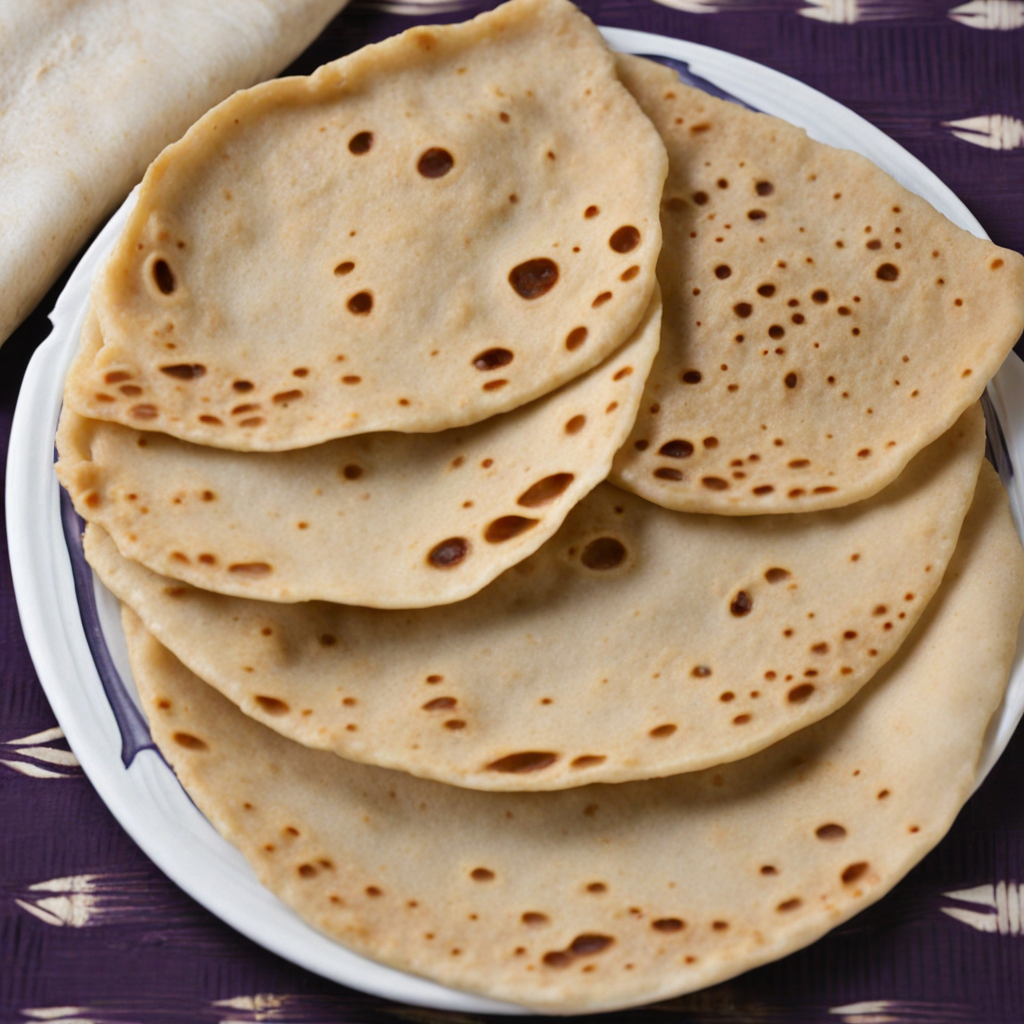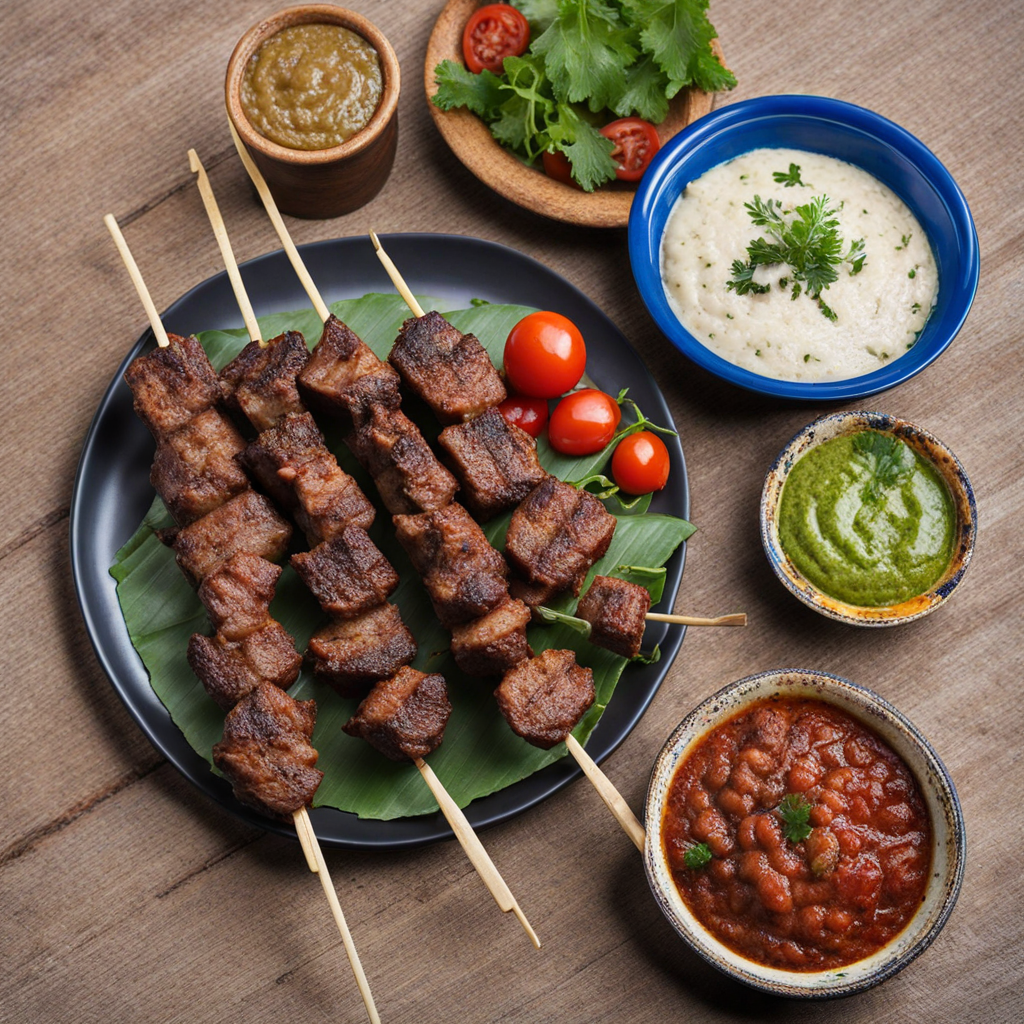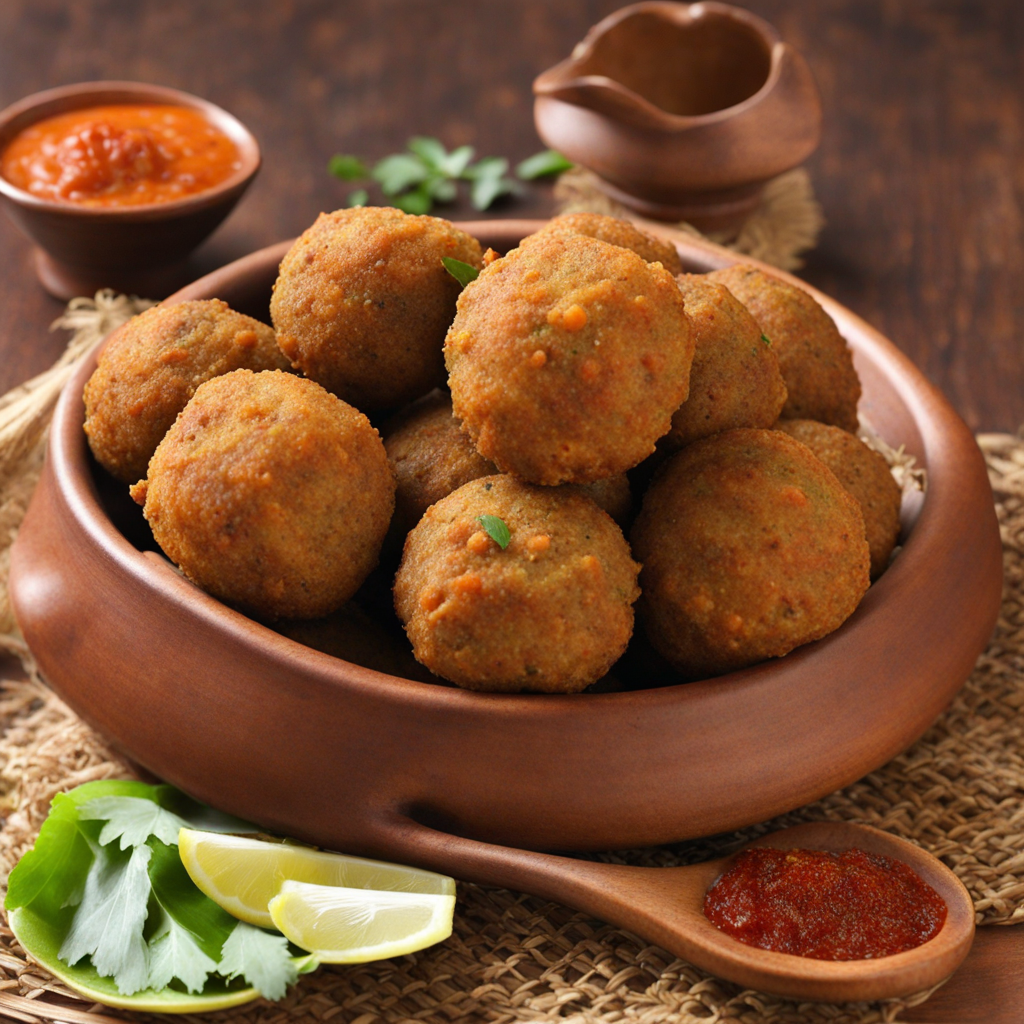Wali
Wali is a traditional Tanzanian dish that serves as a staple carbohydrate, primarily made from rice. The rice is typically cooked to a fluffy and creamy consistency, allowing it to absorb the flavors of the accompanying dishes. While the base is simple, the beauty of Wali lies in its versatility; it can be prepared with various types of rice, including local varieties that offer unique textures and tastes. Often, it is steamed or boiled, resulting in a delicate dish that pairs beautifully with a range of sauces and stews. One of the most popular variations is Wali wa Nazi, which incorporates coconut milk into the cooking process. This infusion adds a rich, tropical flavor that elevates the dish, giving it a subtle sweetness and a creamy mouthfeel. The combination of the nutty coconut and the perfectly cooked rice creates a harmony of textures and flavors that is truly delightful. Wali wa Nazi is often served alongside spicy fish or meat stews, enhancing the overall dining experience with a balance of heat and richness. In Tanzanian culture, Wali is more than just a meal; it is a symbol of hospitality and communal eating. Often enjoyed during family gatherings or special occasions, it brings people together around the table. The dish is typically accompanied by various sides such as vegetables, grilled meats, or spicy sauces, allowing each diner to customize their plate according to their taste preferences. Sampling Wali is not just about the food itself, but also about embracing the warmth and vibrancy of Tanzanian culture through its culinary traditions.
How It Became This Dish
The Culinary Journey of Wali: A Tanzanian Staple Wali, the Swahili word for 'rice', is more than just a dish in Tanzania; it is a cornerstone of the nation’s culinary identity. As the staple carbohydrate, Wali is a symbol of sustenance, cultural heritage, and social unity, reflecting the diverse influences that have shaped Tanzanian society over centuries. This article delves into the origins, cultural significance, and historical development of Wali in Tanzania. #### Origins of Wali The cultivation of rice has a long history in East Africa, with its introduction believed to have occurred around the 7th century, linked to trade routes and the influence of Arab traders. While indigenous grains like millet and sorghum were the primary staples for many communities, rice gradually gained prominence, particularly in coastal regions where the climate and soil conditions were favorable for its cultivation. The first rice varieties cultivated in East Africa were likely of the Oryza sativa species, brought by traders and settlers from Southeast Asia and the Indian subcontinent. This introduction coincided with the flourishing Indian Ocean trade, which facilitated the exchange of not only goods but also agricultural practices and culinary techniques. The spread of rice cultivation was further propelled by the establishment of the Swahili city-states along the East African coast, where diverse cultures mingled, and rice became an integral part of the local diet. #### Cultural Significance Wali holds profound cultural significance in Tanzanian society, transcending mere sustenance. It is a symbol of hospitality, community, and tradition. In many Tanzanian households, Wali is often served during important gatherings, celebrations, and ceremonies, including weddings, religious festivals, and communal feasts. The preparation and sharing of Wali bring families and communities together, fostering bonds and reinforcing social ties. In urban areas, Wali has also adapted to contemporary dining, becoming an essential part of street food culture. Vendors sell Wali accompanied by an array of flavorful stews, grilled meats, and vegetables, reflecting the culinary diversity of Tanzania. This adaptability highlights Wali’s role not only as a staple food but also as a canvas for culinary creativity and expression. #### Development Over Time As Tanzania's history unfolded, so too did the role of Wali evolve. The pre-colonial period saw a variety of rice dishes being prepared in various regions, each with unique local flavors and cooking methods. For example, in coastal regions, coconut milk is often used to prepare Wali, creating a rich and aromatic dish known as Wali wa Nazi. This variation showcases the integration of local ingredients and culinary practices, reflecting the coastal communities' reliance on the ocean and agriculture. Colonial influences in the late 19th and early 20th centuries introduced new agricultural practices and rice varieties. The British colonial administration promoted rice cultivation, particularly in the Kilimanjaro region, to meet the demands of both local populations and export markets. This led to the establishment of rice-growing cooperatives, which transformed Wali from a local dish to a significant agricultural product. Post-independence, the Tanzanian government recognized the importance of rice as a staple food for national food security. Initiatives were launched to improve rice production, including the introduction of high-yielding varieties and modern agricultural techniques. During this period, Wali became a symbol of national pride, representing self-sufficiency and resilience in the face of economic challenges. #### Modern-Day Wali In contemporary Tanzania, Wali continues to be a beloved dish, present in both rural and urban settings. Its versatility allows it to be paired with a myriad of accompaniments, reflecting the diverse culinary landscape of the country. Wali can be found served alongside traditional dishes such as Nyama Choma (grilled meat), Sukuma Wiki (collard greens), and various fish stews, showcasing the harmonious blend of flavors that characterize Tanzanian cuisine. Moreover, the rise of globalization and increased access to international culinary trends have influenced the preparation and presentation of Wali. Chefs and home cooks experiment with fusion recipes, incorporating global flavors while remaining rooted in traditional practices. For instance, Wali has been creatively paired with spicy curries, Mediterranean dishes, and other international cuisines, appealing to a broader audience and showcasing the adaptability of this staple food. #### Conclusion Wali is more than just rice in Tanzania; it is a reflection of the country’s rich history, cultural diversity, and social values. From its origins in ancient trade routes to its current status as a beloved staple, Wali has woven itself into the fabric of Tanzanian life. It serves as a reminder of the connections between food, culture, and community, embodying the resilience and spirit of the Tanzanian people. The evolution of Wali illustrates how food can transcend time and borders, adapting to changing circumstances while holding on to its roots. As Tanzania continues to grow and evolve, Wali remains a cherished dish, a symbol of unity, and a vital part of the nation’s culinary heritage. Whether enjoyed at a family gathering, a street food stall, or a fine dining restaurant, Wali will undoubtedly continue to be celebrated as a beloved staple, nourishing both body and soul for generations to come.
You may like
Discover local flavors from Tanzania


